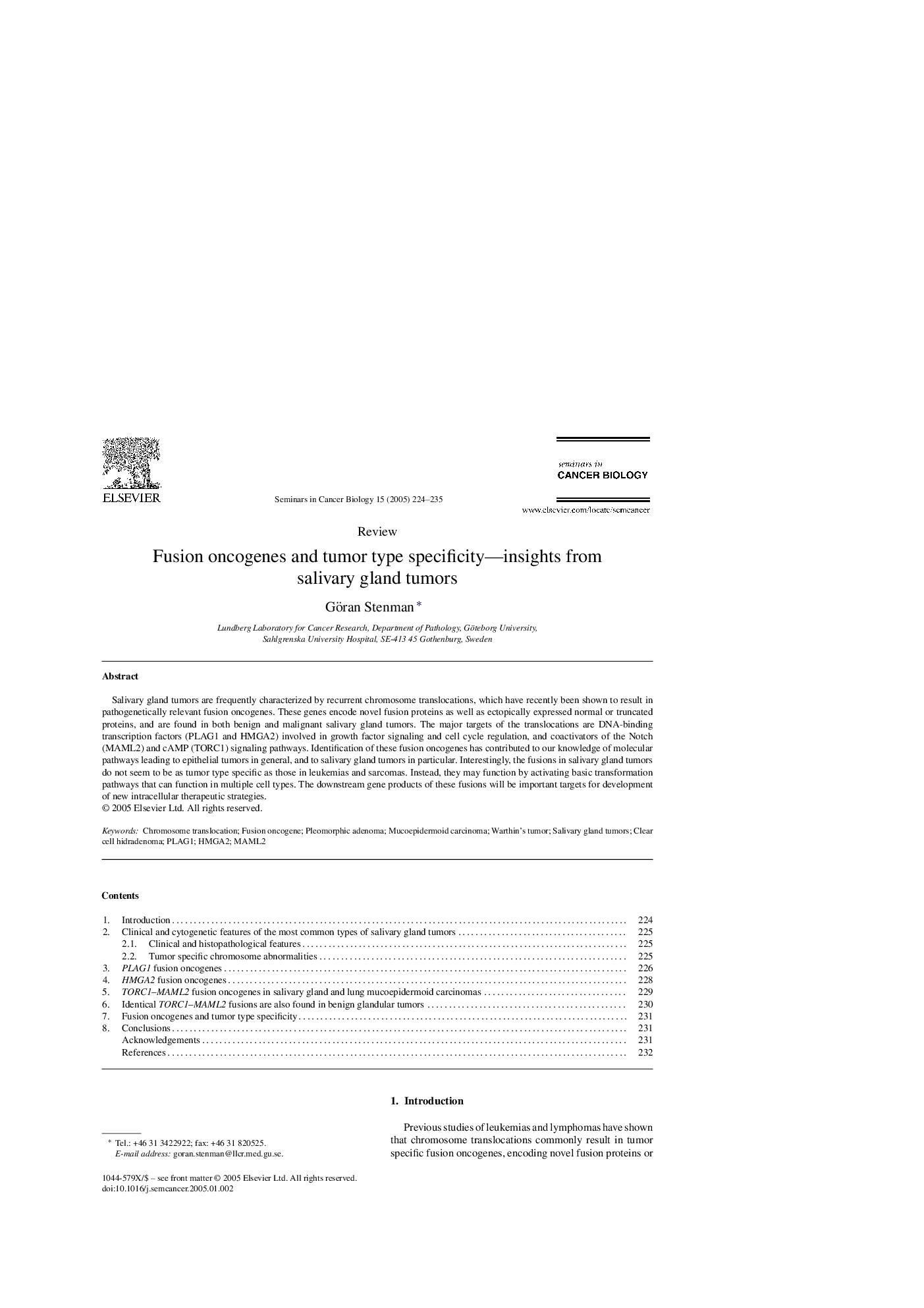| Article ID | Journal | Published Year | Pages | File Type |
|---|---|---|---|---|
| 10845742 | Seminars in Cancer Biology | 2005 | 12 Pages |
Abstract
Salivary gland tumors are frequently characterized by recurrent chromosome translocations, which have recently been shown to result in pathogenetically relevant fusion oncogenes. These genes encode novel fusion proteins as well as ectopically expressed normal or truncated proteins, and are found in both benign and malignant salivary gland tumors. The major targets of the translocations are DNA-binding transcription factors (PLAG1 and HMGA2) involved in growth factor signaling and cell cycle regulation, and coactivators of the Notch (MAML2) and cAMP (TORC1) signaling pathways. Identification of these fusion oncogenes has contributed to our knowledge of molecular pathways leading to epithelial tumors in general, and to salivary gland tumors in particular. Interestingly, the fusions in salivary gland tumors do not seem to be as tumor type specific as those in leukemias and sarcomas. Instead, they may function by activating basic transformation pathways that can function in multiple cell types. The downstream gene products of these fusions will be important targets for development of new intracellular therapeutic strategies.
Keywords
Related Topics
Life Sciences
Biochemistry, Genetics and Molecular Biology
Biochemistry
Authors
Göran Stenman,
